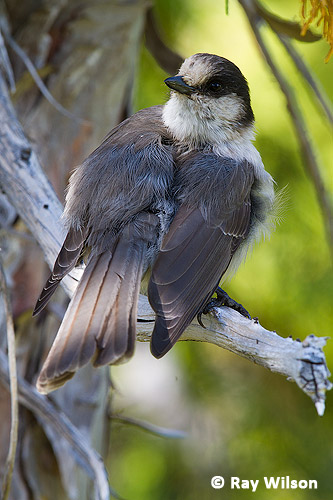
- Home
- Workshops / Tours
- Diary / Blog
- Galleries
- Foreign Trips
- Tasmania 2016
- NE Queensland 2016
- Western Alps 2016
- NE Spain 2016
- Australia's Wet Tropics 2015
- Australia's Top End 2015
- SW Australia 2015
- Switzerland 2015
- Andalucia 2015
- Belize 2015
- Australia 2014
- Switzerland 2014
- Belize 2014
- Bahama Islands 2014
- Switzerland 2013
- Ecuador 2012-2013
- Florida 2011-2012
- Vancouver Island 2011
- Australia 2010
- Peru 2008
- Bulgaria 2007
- Lesvos 2006
- California 2006
- New Zealand 2005
- Extremadura 2005
- Goa, India 2004
- The Gambia 2003
Vancouver Island, Canada
7th-25th September 2011
Forbidden Plateau
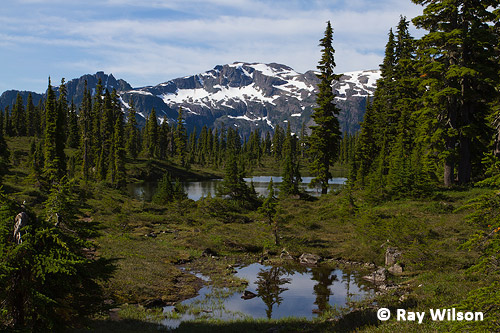
The easiest access point to subalpine habitat on Vancouver Island is to drive up to the Mount Washington ski resort. From here there are a series of fairly easy trails that take you into the Forbidden Plateau. It is still a very long walk, however, if you want to get above the treeline and I didn't quite manage to get that far even though I did walk over 18km on the day I visited.
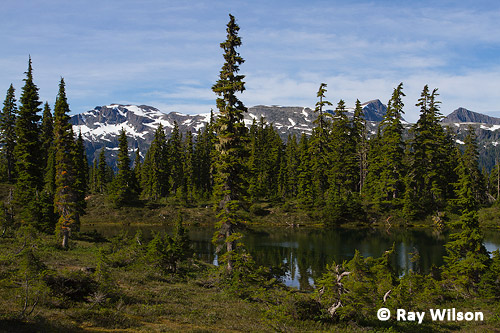
My goal had been to try and find White-tailed Ptarmigan but since the treeline was considerably higher than I had expected, I didn't get into appropriate habitat. Despite this abject failure I still had a fantastic time up there, although I think I might have enjoyed it more if I hadn't been carrying over 20kg of camera gear! The scenery whenever there was a gap in the trees was beautiful!
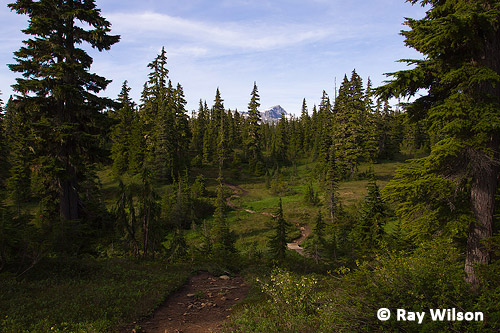
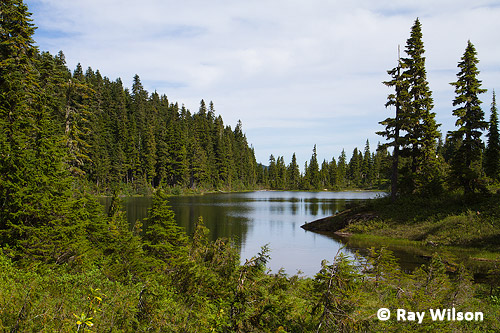
Grey Jay (Perisoreus canadensis)
One bird for which a 600mm lens is pure overkill is the Grey Jay, or Whiskey Jack. This species seems to have developed boldness and curiosity into an art form. If they are in the area, they will often land on a prominent branch very close to you (or the ground at your feet if there is no suitable branches nearby). On occasion, they were too close to focus even with the 100-400mm zoom which has a minimum focusing distance of 1.5m!
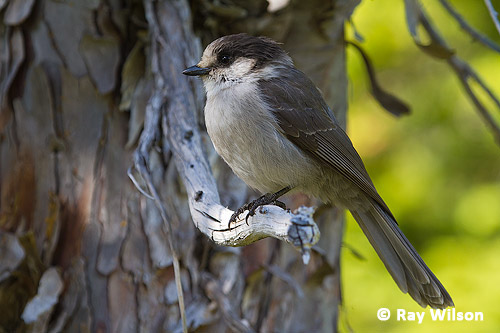
Grey Jay (Perisoreus canadensis)
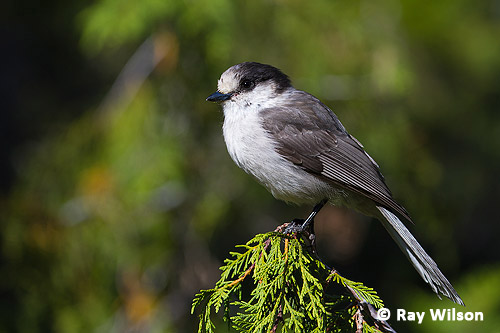
Grey Jay (Perisoreus canadensis)
Although nowhere near as bold as the Grey Jay, Stellar's Jays were also very approachable, particularly along the Paradise Meadows boardwalk where they are presumably used to people feeding them.
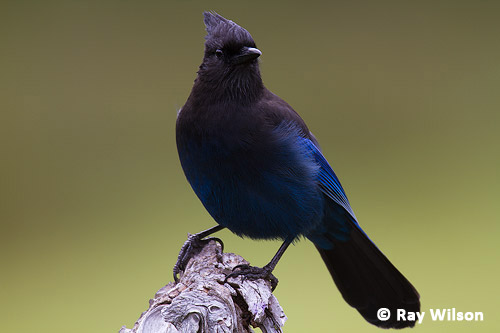
Stellar's Jay (Cyanocitta stellari)
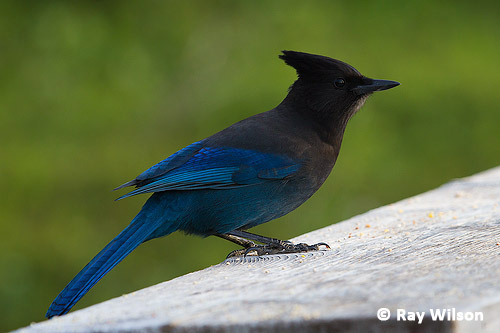
Stellar's Jay (Cyanocitta stellari)
The Oregon Junco is another very common species on the plateau. Oregon Junco is the west coast colour form of the extremely variable Dark-eyed Junco which exists in at least six recognisable polytypic groups. The oreganus group consists of 7 subspecies, 3 of which breed in British Columbia.
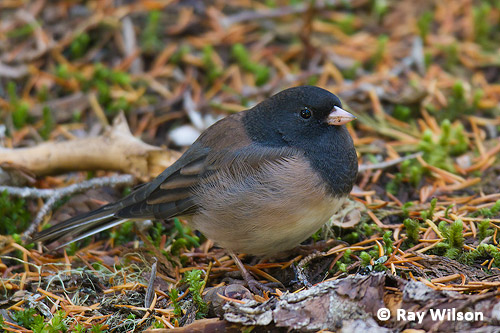
Oregon Junco (Junco hyemalis)
Red Wood Ants are nowhere near as dominant in North American pine forests as they are in Europe and, of the species present in North America, only a couple build the characteristic large thatched mounds that are a feature of this group in European woods. Close to the Kwai Lake campground, I found a small unobtrusive nest of Formica obscuriventris. Like many North American members of the Formica rufa group, this species builds its nest under rocks and constructs only limited thatching around the base of the rock on the south-facing side.
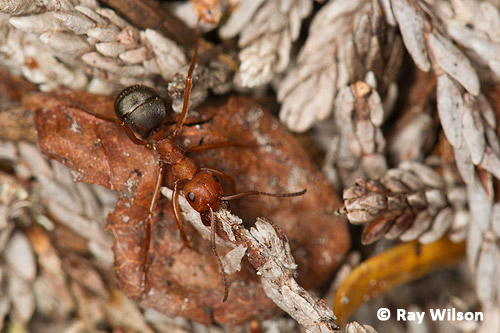
Red Wood Ant (Formica obscuriventris)
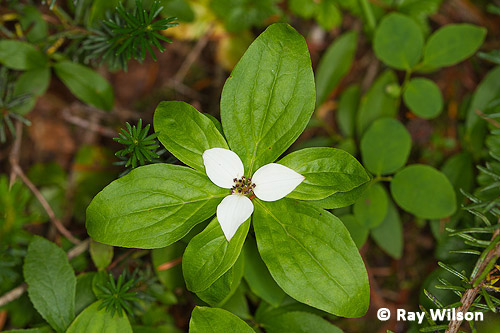
Bunchberry (Cornus canadensis)
Bunchberry flowers usually have 4 petals, but other varieties occasionally occur. I found a small colony of them where all the plants had only 3 petals in a triangular arrangement.
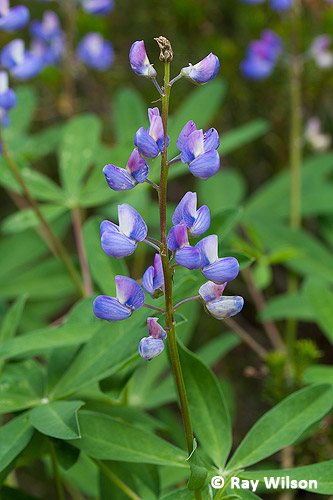
Broad-leafed Lupin (Lupinus latifolius)
Ray Wilson owns the copyright of all images on this site.
They may not be used or copied in any form without prior written permission.
raywilsonphotography@googlemail.com
